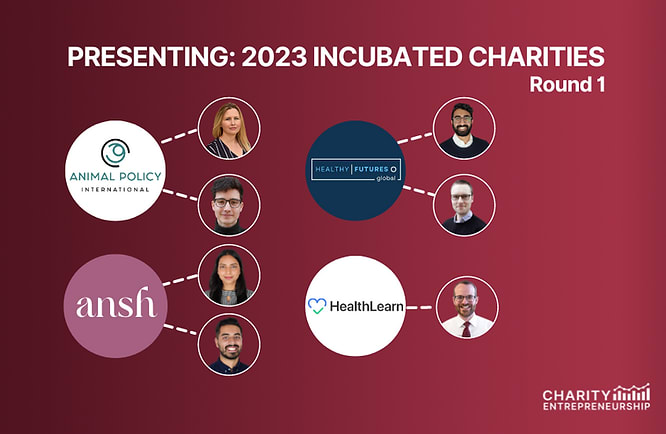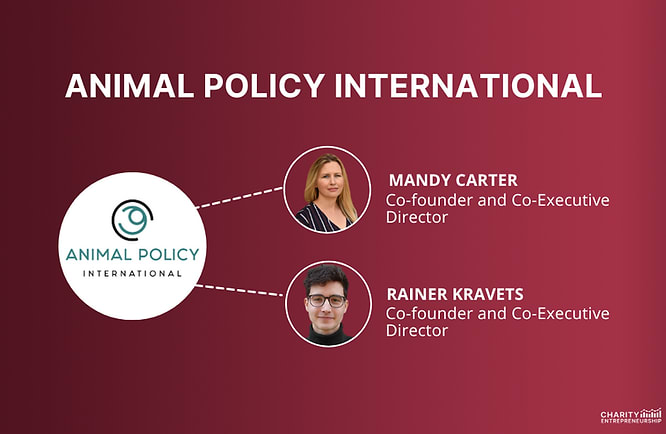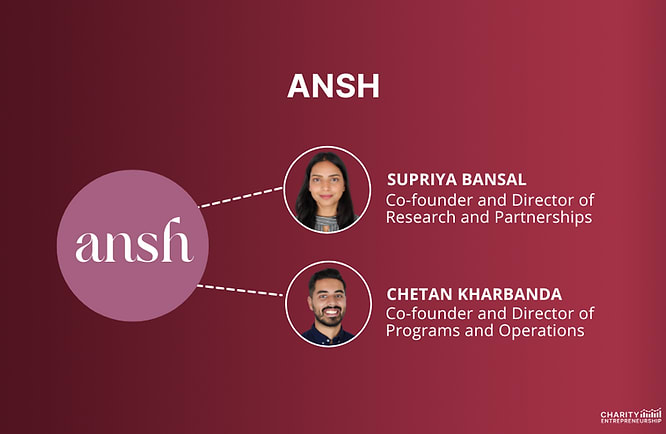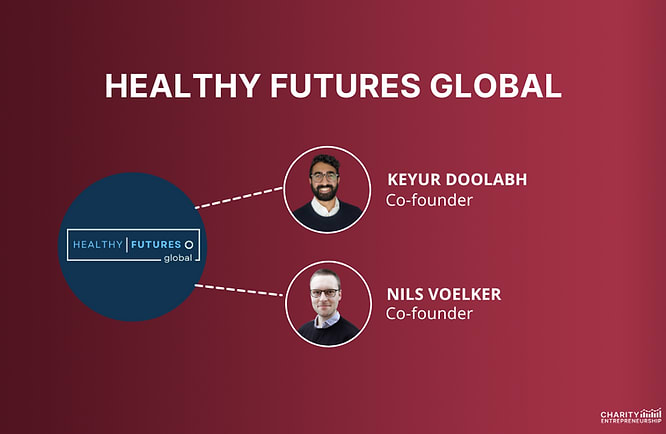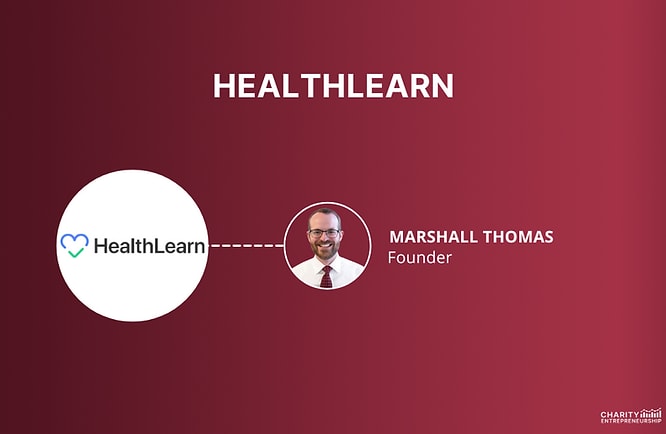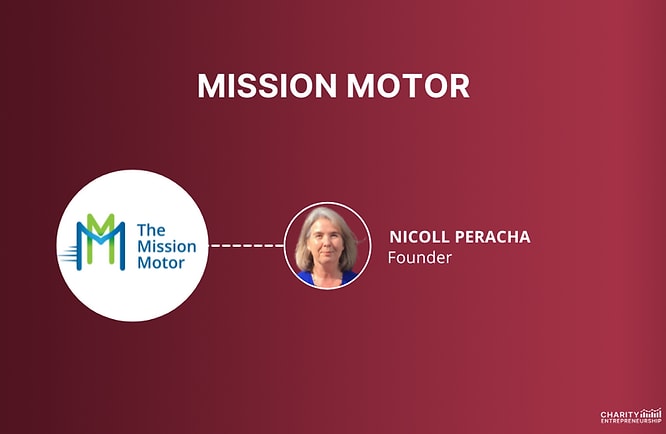We are thrilled to announce the launch of four new nonprofit organizations through our February/March 2023 Incubation Program.
Executive summary
The 2023 Round 1 incubated charities are:
Animal Policy International - Ensuring animal welfare standards are upheld in international trade policy
Ansh - Empowering mothers to save newborn lives by building healthcare capacity for adoption of Kangaroo Care
Healthy Futures Global - Preventing mother-to-child transmission of syphilis through testing and treatment
HealthLearn - Providing the world’s best online training to health workers in developing countries
Two more organizations got started during the program, but are not officially incubated by CE. We believe that the interventions, chosen by the solo founders, are promising (one was recommended by us as a top idea). We have provided support to both organizations through mentorship and benefits similar to those offered to our incubated projects.
These organizations are:
The Mission Motor - Building a more evidence-driven animal cause area by training and supporting organizations to use monitoring and evaluation to improve the impact of their interventions
An organization focused on responsible fishing practices by championing bait fish prohibition.
Context: The Charity Entrepreneurship Incubation Program February/March 2023
The February/March 2023 program focused on global health and animal advocacy. Our generous donors from the CE Seed Network have enabled us to provide these initiatives with $590,000 in grant funding to kickstart their interventions.
In addition to our seed grants, we are dedicated to providing our founders with comprehensive support. This includes continuous mentorship, operational assistance, free co-working spaces at our London office, and access to an ever-growing network of founders, donors, and highly specialized mentors. We have offered several tailored safety nets for those who have decided not to found a charity this program, such as career mentorship, connections to job opportunities, a two-month stipend, or another chance to found a charity through one of our upcoming programs. Our aim is to ensure that all program participants pursue high-impact careers, regardless of whether they found a charity in the given round.
We are also pleased to share with you a recently-published video, which showcases program participants sharing their insights on the challenges and benefits of the program. They discuss their motivations for applying, as well as what they found most useful and enjoyable. The footage was filmed during an in-person week held at our London office, and we believe it provides valuable insights into what makes our program unique. We hope you take a moment to watch it.
Feel free to learn more about the program here. The next application phase will start on July 10, and close on September 30, 2023. You'll have the opportunity to apply for both the February/March 2024 and July/August 2024 Incubation Programs. For the February/March 2024 program, our focus will be on: mass-media interventions, and preventative animal advocacy. To receive notifications when we start accepting applications, sign up here.
Our new charities in detail
ANIMAL POLICY INTERNATIONAL
Co-founders and Co-Executive Directors: Mandy Carter, Rainer Kravets
Website: animalpolicyinternational.org
Email address: info@animalpolicyinternational.org
LinkedIn
CE Incubation Grant: $110,000
Description of the intervention
Animal Policy International is working with policymakers in regions with higher levels of animal welfare legislation to advocate for responsible imports that are in line with domestic laws. By applying equal standards, they aim to advance animal welfare in exporting countries with lower levels of animal welfare.
Background of the intervention
There are significant differences between farmed animal welfare standards across the globe, with billions of animals still confined in factory farms. Due to a lack of protective measures, even regions with higher standards (like the EU, the UK, Switzerland and New Zealand) tend to import a significant portion of their animal products from countries where animals experience significant suffering.
The countries with higher welfare standards can apply their norms to imported animal products by restricting access to low-welfare animal products that would have been illegal to produce domestically. By doing so, this can incentivise farmers elsewhere to increase their standards to maintain their access to existing supply chains.
A law restricting the importation of low-welfare products provides a unique win-win opportunity for both animal advocates and farmers in higher welfare countries, especially in New Zealand, the first country of operation. Some farmers are facing tough competition from low-priced low-welfare imports, and are demanding more equal standards between imports and local produce. This issue is especially pertinent since New Zealand’s decision to phase out farrowing crates on local pig farms by December 2025.
Near-term plans
Starting in mid-June, Animal Policy International will spend several weeks in their first country of operation, New Zealand. They will focus on establishing connections with government officials, industry groups, and NGOs. The plan is to gather information that will help them improve their intervention approach.
They will also:
- Publish evidence to support their ask, by producing and distributing a policy brief
- Conduct a public opinion poll to begin to build evidence of public support for a ban
- Conduct research on the legality of import restrictions
- Monitor developments in other promising countries, establish key contacts, and develop a response plan
Predicted impact
A law restricting the importation of low-welfare animal products in New Zealand could save approximately 8 million fish per year from suffering poor living conditions, transportation, and slaughter practices, spare 330,000 pigs from cruel farrowing crates, and 380,000 chickens from inhumane living conditions. Furthermore, successfully introducing the law in a single country could set a positive international precedent that could help achieve similar wins in other regions, and improve the lives of millions more globally.
Cost-effectiveness
Expected cost-effectiveness is ~7 animals helped per dollar in the first country, New Zealand. In the welfare points (WP) system the impact is 36.46 WPs per charity dollar.
Room for more funding in 2023: $51,000. At the moment they have enough funds to last around nine months on a lean budget. Additional funding means they would be fully funded for the first 12 months, allowing them to focus all their efforts on executing the intervention until March 2024. It would also allow them to hire a local contractor at additional hours, and spend more time in-country networking with stakeholders to improve and speed up their work, increasing their impact.
ANSH
Co-founders: Supriya Bansal (Director of Research and Partnerships) and Chetan Kharbanda
Website: ansh.health
Email address: supriya@ansh.health, chetan@ansh.health
LinkedIn
CE Incubation Grant: $130,000
Description of the intervention
Ansh builds healthcare capacity to provide “Kangaroo Care”, an exceptionally simple and scientifically-proven treatment to avert newborn deaths. This intervention aims to be as cost-effective as GiveWell’s top charities.
Background of the intervention
In 2020, an estimated 2.4 million children globally died within the first month of their lives. India alone accounted for 22% of these newborn deaths. Around 80% of neonatal deaths happen in babies who are born with a low birth weight, which makes it the leading risk factor for mortality among children under five years of age.
A simple solution has the potential to significantly reduce these deaths: placing low birth weight infants directly onto the parent's chest for skin-to-skin contact, an intervention known as Kangaroo Care. Kangaroo Care entails not only prolonged and continuous skin-to-skin contact, but also exclusive breastfeeding and close monitoring of the infant.
Kangaroo Care has been shown to reduce mortality by around a third (compared to standard care using electric incubators) and reduce morbidity from common conditions like hypothermia. KC has also been shown to help reduce mortality from severe infections like sepsis, and help newborns gain weight.
However, adoption barriers for Kangaroo Care in LMICs, such as India, persist. These include insufficient equipment, a shortage of human resources, and a lack of privacy within healthcare facilities. Many of the target healthcare facilities even lack the infrastructure for conventional standards of care (i.e., electric incubators), further amplifying the potential impact of Kangaroo Care in low-resource settings.
Ansh’s approach is both direct and cost-effective: repurpose existing hospital spaces to facilitate Kangaroo Care, provide essential equipment like infant weighing scales and cloth binders, and expand capacity by training and hiring health workers dedicated to teaching and monitoring Kangaroo Care for mothers in the wards.
Near-term plans
Ansh plans to move to India by the end of May and start building strong partnerships with the state government and partner NGOs. With the help of advisors, identified experts, and context-specific stakeholders (which will include nurses, beneficiaries and administration staff at public health facilities), they will refine their intervention and make it context-specific.
During this time, they will also develop a well-defined M&E strategy, and start setting up in public facilities. This will include training for healthcare workers, providing equipment such as curtains, infant weighing scale and cloth binders, and potentially hiring Kangaroo Care support staff.
Within the next four months, their goal is to launch a fully functional pilot in one district of a top-priority state, and start supporting parents to provide Kangaroo Care to their low birth weight babies.
Predicted impact
70-105 neonatal deaths could be prevented in the first year of operation in India.
Cost-effectiveness
Ansh estimates that, in the first year of operation, they can save a life for less than $2500 in one district in India, averting a DALY for just $48 (10x-12x direct cash transfers). At scale, they could save a life for less than $1500, averting a DALY for just $26 (19x direct cash transfers).
Room for more funding in 2023: With $70,000 more in funding, they can cover all public facilities in one Indian district. This would allow them to build higher quality evidence for running this charity at scale, and potentially meet GiveWell’s cost-effectiveness standards once their pilot is operational.
HEALTHY FUTURES GLOBAL
Co-founders: Nils Voelker and Keyur Doolabh
Website: healthyfutures.global
Email address: info@HealthyFutures.Global
CE Incubation Grant: $190,000
Description of the intervention
Healthy Futures Global works to test and treat pregnant women for syphilis. This stops syphilis transmission from mother to child, and prevents newborn deaths, stillbirths, and disability.
Background of the intervention
Mother-to-child transmission of syphilis causes 60,000 newborn deaths and 140,000 stillbirths each year, making it the second leading cause of stillbirths. Babies that survive can have lifelong disabilities, including cognitive impairment, bone deformity, and liver dysfunction. Despite this, many pregnant women globally are not tested for syphilis.
Healthy Futures will boost antenatal syphilis testing by utilizing the established screening infrastructure for HIV. Thanks to HIV rapid tests, global HIV screening rates during pregnancy are high. Newer rapid tests, approved by the WHO, can detect both HIV and syphilis. Healthy Futures will help governments shift to using these dual tests, and help them treat syphilis cases with penicillin. This reduces the chance of mother-to-child transmission of syphilis by 97%.
Near-term plans
From mid-May, they will spend two months in the most promising countries they have found - the Philippines (starting May 24th) and Tanzania (starting June 18th). They will use that time to build relationships with government officials and potential partner NGOs, as well as to refine their intervention approach.
They then plan to pilot the syphilis dual tests and penicillin treatments in about three antenatal clinics over seven months, before lobbying and assisting the government to roll out the dual testing country-wide. This could include drafting updated clinical guidelines, coordinating procurement with manufacturers, providing training materials for health workers, and helping governments secure institutional funding.
Predicted impact 127,000 - 207,000 DALYs averted in their first country
Cost-effectiveness 9-11x more cost-effective than cash transfers
Room for more funding in 2023: $65,000, to allow them to operate in nine extra antenatal clinics, test another 3,600 pregnant women, and avert another 375 DALYs in their first year.
HEALTHLEARN
Founder: Marshall Thomas
Website: https://healthlearn.org
Email address contact@healthlearn.org
CE Incubation Grant: $130,000
Description of the intervention
HealthLearn trains health workers in developing countries with simple, mobile-optimized, case-based online courses. Through recent courses developed by their team, they have already proven that they can train thousands of health workers in Africa with high completion rates and strong learning gains. They will use these online courses to teach straightforward, knowledge-based practices that save lives, starting with newborn care and moving on to many of the leading causes of readily preventable deaths.
The learning experience is inspired by Duolingo: rather than passively watching videos, health workers actively engage by answering questions and receiving feedback on realistic clinical cases. Our analyses show that this approach, applied to newborn care, has the potential to be highly cost-effective. By teaching best clinical practices that address the most common causes of preventable deaths, HealthLearn can become a new tool for strengthening health systems in developing countries.
Background of the intervention
There are millions of newborn deaths every year; some of these deaths are easily averted when health workers implement up-to-date clinical practices. For example, studies show that waiting at least 30 seconds to clamp and cut the umbilical cord at birth prevents 32% of preterm newborn deaths. If delayed cord clamping were universally implemented, it would avert over 140,000 newborn deaths annually. In many cases, these recommended approaches are simpler and cost less than current practices. Unfortunately, life-saving clinical recommendations are often “trapped” in dense guidance documents, so we still live in a world where many health workers don’t provide up-to-date care because they aren’t aware of current best practices.
According to a recent report by GiveWell, training facility-based health workers to provide better care at birth reduces newborn deaths by 33%; such training may be among the most cost-effective health programs known. HealthLearn have recently developed and piloted a new approach to train health workers online with simple, engaging, case-based courses. They aim to apply the same approach to other topics, starting with newborn care, to create a new, cost-effective way to upskill health workers and lower the burden of readily preventable deaths.
Near-term plans
In the next year, they will test key uncertainties in the HealthLearn model by piloting a newborn care course, training ≥1,500 health workers in one country in Africa. They will measure uptake, knowledge gains, and improvements in clinical practice. They will use what they learn to either pivot or accelerate towards a rigorous evaluation of the impact of HealthLearn at scale.
Cost-effectiveness
GiveWell’s research suggests that in-person health worker training is in the range of cost-effectiveness of the charities that it currently funds. When operating at scale, HealthLearn estimates a cost of $6 - $43 per DALY averted (>15X cash transfers).
How you can help
Volunteering: Experienced full-stack engineers, public health professionals, and technology business executives can help HealthLearn maximize its impact and chances of success.
Connections: The HealthLearn team is looking for partner organizations that work in primary health centers and are eager to test out innovative training approaches.
Funding: With an additional $32,000 in funding in 2023, they will be able to launch a larger-scale evaluation of the impact of HealthLearn on health worker clinical practices. This would begin to address one of the biggest uncertainties in the HealthLearn model. Additional funding would also allow them to support in-person site visits to the primary health centers where HealthLearn is piloted, which should increase their impact and decrease the cost per life saved.
THE MISSION MOTOR
Founder: Nicoll Peracha
Website: www.themissionmotor.org
Email address: nicollperacha@themissionmotor.org
LinkedIn
CE Incubation Grant: $30,000
Description of the intervention
The Mission Motor will support potentially high-impact animal and vegan advocacy charities to adopt an evidence-driven way of working. They will train and coach charities to use monitoring and evaluation, and help them to interpret and act upon the data generated, thus steering them towards higher impact interventions.
To maximize and scale the impact of their program, they will add fundraising support for the most promising participating organizations. With the increased capacity, charities can enlarge their impact and become leaders in their field.
Background of the intervention
Giving What We Can estimates that the best charity can be 10 times as effective as the typical charity within the same area, and hundreds of times better than poorly performing charities. This indicates that there is significant room for improvement in regards to impact. Gathering data and using evidence can optimize program design, improve implementation, and maximize impact. However, The Mission Motor has found that animal and vegan advocacy organizations often feel a huge sense of urgency to focus on implementing interventions, they have few role models, and measuring effectiveness easily becomes an afterthought.
Knowledge of which interventions are the most cost-effective has contributed to the progress of other cause areas. (J-PAL Poverty Action Lab, 2022). Applying lessons learned from other sectors can advance the animal cause area.
Near-term plans
In the coming months, The Mission Motor will develop the training and support program to introduce monitoring and evaluation tools suitable and beneficial for animal and vegan organizations. The training will address the use of tools such as needs assessments, survey design, developing a theory of change, and identifying assumptions. The coaching program will address topics such as setting time for learning and reflection, and how to best create the space where it is possible to act according to the data generated by M&E.
They have engaged in partnership with Animal Ask, and are developing partnerships with ProVeg International and Animal Advocacy Africa to mutually reinforce each other's activities.
They plan to start the implementation phase of the intervention in September, and test the key uncertainties while training and supporting up to 10 organizations. They will particularly focus on monitoring whether or not the program has an effect on the actions of the participating organizations.
Cost-effectiveness
Estimating pre-program cost-effectiveness for this type of program is difficult, but they cautiously estimate that the program could, at full scale, affect up to 415 animal lives for each dollar spent.
Room for more funding in 2023: $71,000 Their current funding allows them to develop and implement the training, do a cost-effectiveness analysis, and to implement a few elements of the support program for up to four organizations. With an additional $71,000 they will be able to provide bi-weekly coaching sessions aimed to support the implementation of Monitoring & Evaluation tools, to gather and analyze more data, and to develop two extra workshops based on the needs identified during the program. With extra funding they will also add at least two more organizations to the program, providing them with better data to analyze the effect of the intervention.

